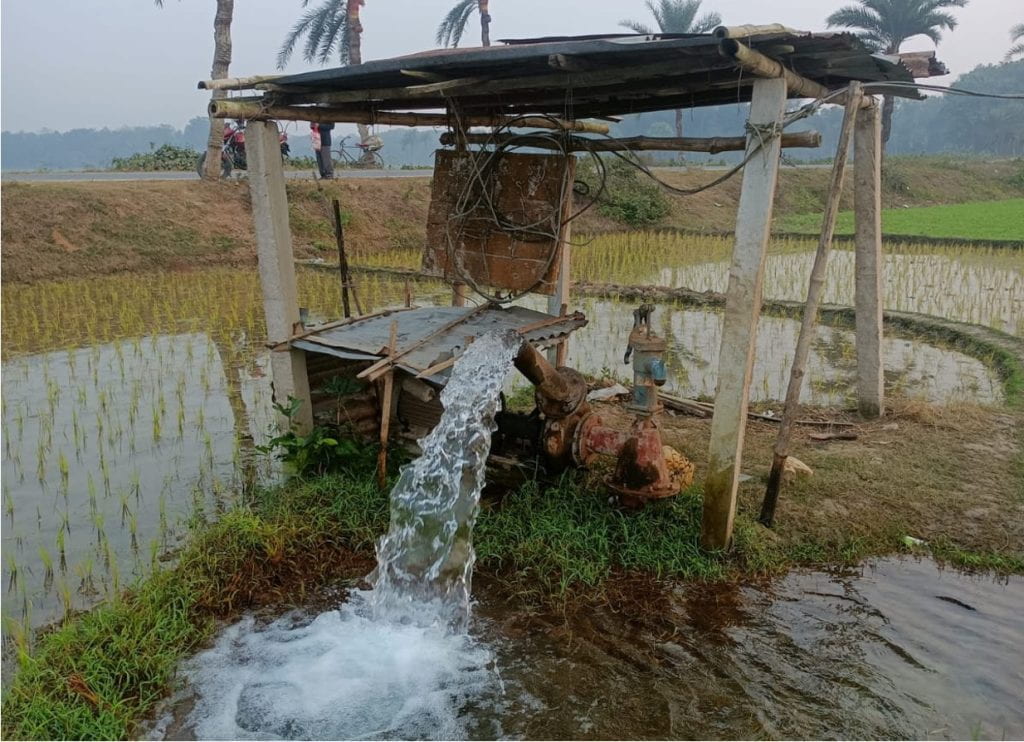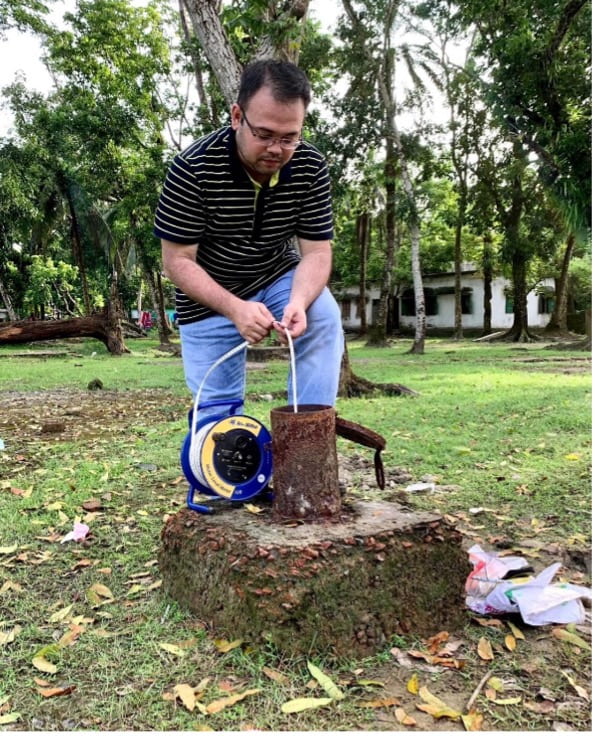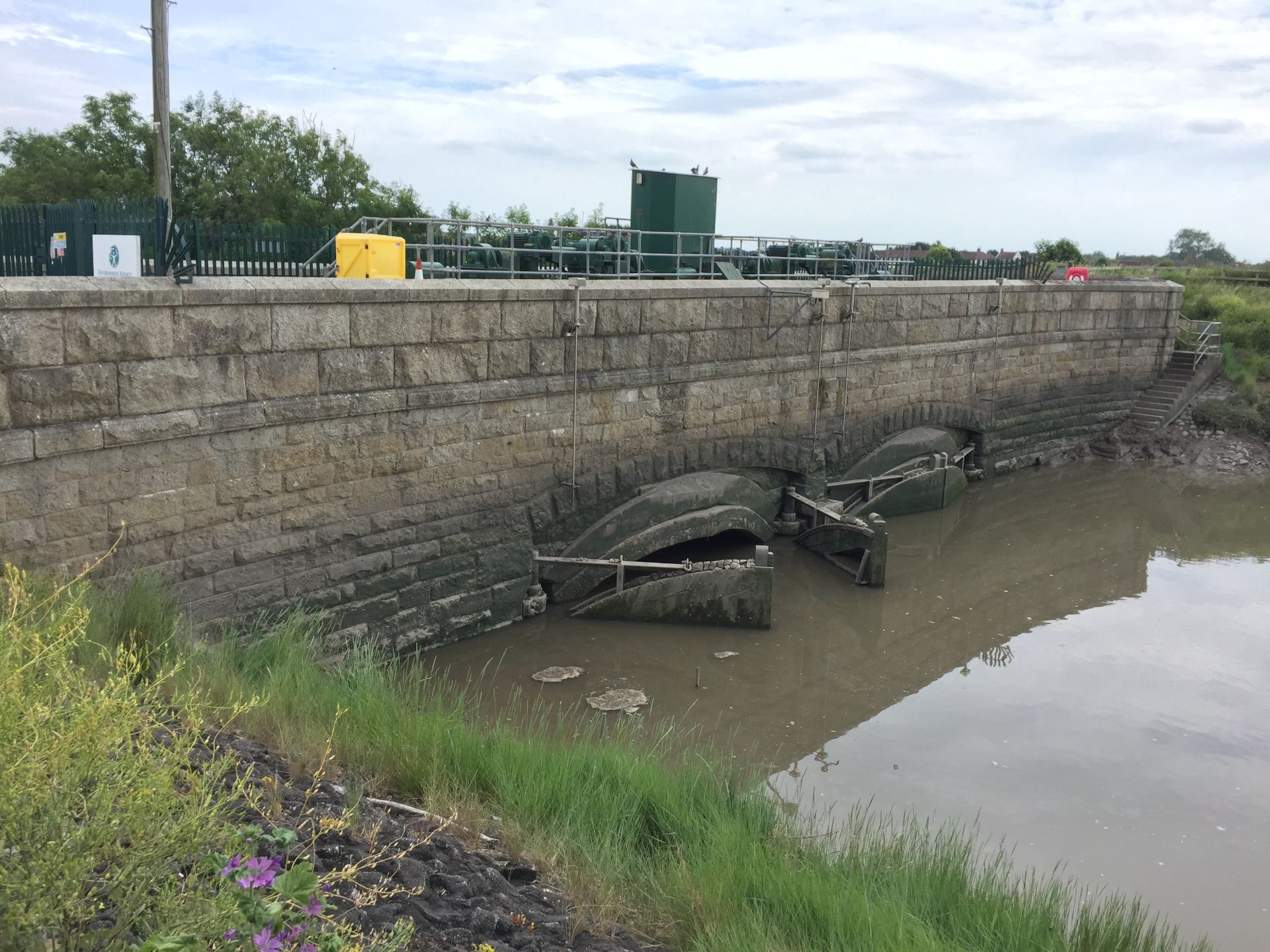Mapping the world’s largest hidden resource
By Mohammad Shamsudduha, on 15 February 2024

Water sustains life and livelihoods. It is intrinsically linked to all aspects of life from maintaining a healthy life, growing food, and economic development to supporting ecosystems services and biodiversity. Groundwater—water that is found underneath the earth’s surface in cracks and pores of sediments and rocks—stores almost 99% of all liquid freshwater on Earth. Globally, it is a vital resource that provides drinking water to billions of individuals and supplies nearly half of all freshwaters used for irrigation to produce crops. But are we using it sustainably?
Abstraction
Groundwater is dug out of subsurface aquifers by wells and boreholes, or it comes out naturally through cracks of rocks via springs. Today, about 2.5 billion people depend on groundwater to satisfy their drinking water needs, and a third of the world’s irrigation water supply comes from groundwater. It plays a crucial role in supplying drinking water during disasters such as floods and droughts when surface water is too polluted or absent. Despite its important role in our society, the hidden nature of groundwater often means it is underappreciated and underrepresented in our global and national policies as well as public awareness. Consequently, A hidden natural resource that is out of sight is also out of mind.
Some countries (e.g., Bangladesh) are primarily dependent on groundwater for everything they do from crop production to the generation of energy. Other countries like the UK use surface water alongside groundwater to meet their daily water needs; some countries (e.g., Qatar, Malta) in the world are almost entirely dependent on groundwater resources. Because of its general purity, groundwater is also heavily used in the industrial sector.
Monitoring
Despite our heavy reliance on it, there is a lack of groundwater monitoring across the world. Monitoring of groundwater resources, both quality and quantity, is patchy and uneven. Developed countries like Australia, France and USA have very good infrastructure for monitoring groundwater. Monitoring is little or absent in many low- and medium-income countries around the world. There are some exceptions as some countries in the global south such as Bangladesh, India and Iran do have good monitoring networks of groundwater levels.
Groundwater storage changes are normally measured at an observation borehole or well manually with a whistle attached to a measuring tape, so when it comes into contact with water, it makes a sound. It can be also monitored by sophisticated automated data loggers. Groundwater can be monitored indirectly using computer models and, remotely at large spatial scales, by earth observation satellites such as the Gravity Recovery and Climate Experiment (GRACE) twin satellite mission. Models and satellite data have shown that groundwater levels are falling in many aquifers around the world because of over-abstraction and changes in land-use and climate change. However, due to lack of global-scale monitoring of groundwater levels, mapping of world’s aquifers has not been done at the scale of its use and management.
Current research
New research published in Nature (Rapid groundwater decline and some cases of recovery in aquifers globally) led by researchers from UCL, University of California at Santa Barbara and ETH Zürich has analysed groundwater-level measurements taken over the last two decades from 170,000 wells in about 1,700 aquifer systems. This is the first study that has mapped trends in groundwater levels using ground-based data at the global scale in such an unprecedented detail that no computer models or satellite missions have achieved this so far. The mapping of aquifers in more than 40 countries has revealed great details of the spatiotemporal dynamics in groundwater storage change.
The study has found that groundwater levels are declining by more than 10 cm per year in 36% of the monitored aquifer systems. It has also reported rapid declines of more than 50 cm per year in 12% of the aquifer systems with the most severe declines observed in cultivated lands in dry climates. Many aquifers in Iran, Chile, Mexico, and the USA are declining rapidly in the 21st century. Sustained groundwater depletion can cause seawater intrusion in coastal areas, land subsidence, streamflow depletion and wells running dry when pumping of groundwater is high and the natural rates of aquifer’s replenishment are smaller than the withdrawals rates of water. Depletion of aquifers can seriously affect water and food security, and natural functioning of wetlands and rivers, and more critically, access to clean and convenient freshwater for all.
The study has also shown that groundwater levels have recovered or been recovering in some previously depleted aquifers around the world. For example, aquifers in Spain, Thailand as well as in some parts of the USA have recovered from being depleted over a period of time. These finding are new and can shed light on the scale of groundwater depletion problem that was not possible to visualise from global-scale computer models or satellites. This research highlights some cases of recovery where groundwater-level declines were reversed by interventions such as policy changes, inter-basin water transfers or nature-based but technologically-aided solutions such as managed aquifer recharge. For example, Bangkok in Thailand saw a reversal of groundwater-level decline from the 1980s and 1990s following the implementation of regulations designed to reduce groundwater pumping in the recent decades.
Groundwater is considered to be more resilient to climate change compared to surface water. Experts say climate adaptation means better water management. Globally, the awareness of groundwater is growing very fast. It has been especially highlighted in the latest IPCC Sixth Assessment Report, the UN World Water Development Report 2022 (Groundwater: Making the invisible visible), the UN Water Conference 2023, and more recently in COP28 (Drive Water Up the Agenda). Groundwater should be prioritised in climate and natural hazard and disaster risk reduction strategies, short-term humanitarian crisis response and long-term sustainable development action.
Dr Mohammad Shamsudduha “Shams” is an Associate Professor in IRDR with a research focus on water risks to public health, sustainable development, and climate resilience.
The views expressed in this blog are those of the author.
Read more IRDR Blogs
Follow IRDR on Twitter @UCLIRDR
 Close
Close









